Category: Recommended Reading
Larry Summers on What Went Wrong on Campus
Yascha Mounk and Larry Summers on Persuasion podcast:
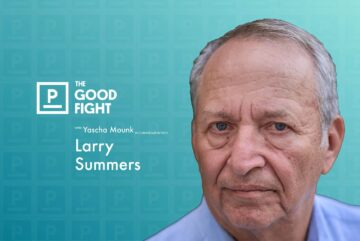 Larry Summers: Paul Samuelson famously said that if he would be allowed to write the economics textbooks, he didn’t care who would get to perform as the finance ministers going forward. So I think what happens in universities is immensely important. And I think there is a widespread sense—and it is, I think, unfortunately, with considerable validity—that many of our leading universities have lost their way; that values that one associated as central to universities—excellence, truth, integrity, opportunity—have come to seem like secondary values relative to the pursuit of certain concepts of social justice, the veneration of certain concepts of identity, the primacy of feeling over analysis, and the elevation of subjective perspective. And that has led to clashes within universities and, more importantly, an enormous estrangement between universities and the broader society.
Larry Summers: Paul Samuelson famously said that if he would be allowed to write the economics textbooks, he didn’t care who would get to perform as the finance ministers going forward. So I think what happens in universities is immensely important. And I think there is a widespread sense—and it is, I think, unfortunately, with considerable validity—that many of our leading universities have lost their way; that values that one associated as central to universities—excellence, truth, integrity, opportunity—have come to seem like secondary values relative to the pursuit of certain concepts of social justice, the veneration of certain concepts of identity, the primacy of feeling over analysis, and the elevation of subjective perspective. And that has led to clashes within universities and, more importantly, an enormous estrangement between universities and the broader society.
When the president of Harvard is a figure on a Saturday Night Live skit, when three presidents of universities combine to produce the most watched congressional hearing film clip in history, when applications to Harvard fall in a several-month period by more they’ve ever fallen before, when alumni are widely repudiating their alma mater, when they’re the subject of as many legal investigations as the Boeing company, you have a real crisis in higher education. And I think it’s been a long time coming because of those changes in values that I was describing.
More here.
A.I. Is Learning What It Means to Be Alive
Carl Zimmer in The New York Times:
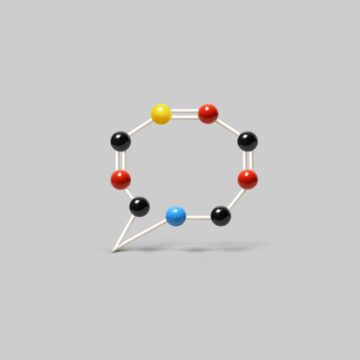 In 1889, a French doctor named Francois-Gilbert Viault climbed down from a mountain in the Andes, drew blood from his arm and inspected it under a microscope. Dr. Viault’s red blood cells, which ferry oxygen, had surged 42 percent. He had discovered a mysterious power of the human body: When it needs more of these crucial cells, it can make them on demand. In the early 1900s, scientists theorized that a hormone was the cause. They called the theoretical hormone erythropoietin, or “red maker” in Greek. Seven decades later, researchers found actual erythropoietin after filtering 670 gallons of urine. And about 50 years after that, biologists in Israel announced they had found a rare kidney cell that makes the hormone when oxygen drops too low. It’s called the Norn cell, named after the Norse deities who were believed to control human fate. It took humans 134 years to discover Norn cells. Last summer, computers in California discovered them on their own in just six weeks.
In 1889, a French doctor named Francois-Gilbert Viault climbed down from a mountain in the Andes, drew blood from his arm and inspected it under a microscope. Dr. Viault’s red blood cells, which ferry oxygen, had surged 42 percent. He had discovered a mysterious power of the human body: When it needs more of these crucial cells, it can make them on demand. In the early 1900s, scientists theorized that a hormone was the cause. They called the theoretical hormone erythropoietin, or “red maker” in Greek. Seven decades later, researchers found actual erythropoietin after filtering 670 gallons of urine. And about 50 years after that, biologists in Israel announced they had found a rare kidney cell that makes the hormone when oxygen drops too low. It’s called the Norn cell, named after the Norse deities who were believed to control human fate. It took humans 134 years to discover Norn cells. Last summer, computers in California discovered them on their own in just six weeks.
The discovery came about when researchers at Stanford programmed the computers to teach themselves biology. The computers ran an artificial intelligence program similar to ChatGPT, the popular bot that became fluent with language after training on billions of pieces of text from the internet. But the Stanford researchers trained their computers on raw data about millions of real cells and their chemical and genetic makeup. The researchers did not tell the computers what these measurements meant. They did not explain that different kinds of cells have different biochemical profiles. They did not define which cells catch light in our eyes, for example, or which ones make antibodies.
More here.
Untangling Religion From Our AI Debates
Thomas Moynihan at Noema:
Despite vehement disagreement on almost everything else, proponents of AI safety and acceleration, alike, share the belief in a coming, potentially imminent, historic threshold beyond which all things recognizably human may dissolve. At least some accelerationists seem to welcome this outcome, though this may be more of an attempt (with predictable success) to court notoriety than any serious commitment. By stark contrast, those concerned with AI safety, fearing the construction of powerful AI systems not “aligned” with human interests and values emphatically want to avert any such fate.
It is, by now, trite to point out the resemblance of such belief to age-old apocalyptic and millenarian patterns of thought. But many cultures exhibit such strains. What remains hidden is a deeper, and more specifically Christian, consonance of convictions.
more here.
Magdalene Laundries
Rachel Andrews at The White Review:
The 10,000 women and girls (a conservative estimate) who were forcibly sent to reside in Ireland’s ten Magdalene Laundries between 1922 and 1996, when the last institution closed, washed the community’s clothes and sheets ten hours a day, six days a week, without pay. The dirty laundry symbolised the stain on their souls; the ‘penitents’, as the women were termed, were to render themselves morally spotless by scrubbing clean any trace of deviant behaviour, which often – but not always – involved sexual activity outside of marriage. The penal quality of the environment was also essential. The women’s names were changed when they went inside the institution. Their hair was cut short. They were dressed in a shapeless smocked uniform. The nuns have always said the women were not imprisoned, yet they were not allowed to leave. Maybe the sisters wanted to shield the Magdalene women from society’s prejudices, as the religious have claimed. But the Laundries were also money-making entities, so perhaps the nuns were also interested in holding onto their slave workforce. They were not interested in the wellbeing of that workforce. The women were cold; they were poorly fed; they were under constant fear of harsh punishment. They were scorned, ignored, beaten and brutalised. They believed they would die inside the Laundries, and many did, although the exact number is hard to quantify. The Irish State suggests there were around 900 deaths; campaigners argue it could be almost double. The documentary evidence is sparse, like almost everything to do with the Laundries, What we do have are the testimonies. The women from the Magdalene Laundries have begun to speak, finally, of their memories.
more here.
Claude Sentience Experiments
Tuesday Poem
“Go back to what?”
Go back to storm warning and rain delay.
Go back to parchment, papyrus, vellum.
Go back to land line and gravel driveway.
Go back to blent, unbent light, pre-prism.
Go back to samekh, yodh, zayin, aleph,
great auk, ivory-billed, passenger pigeon.
Go back to cave painting and petroglyph.
Go back to mask, to God from the machine.
Go back to compacted cosmos, the size
of a penguin’s egg, steadied by webbed feet,
stayed from snow, against God’s belly feathers.
Go back to left hand does know what the right.
Go back to stage fright, recurring nightmare,
back to Houston, we’ve had a problem here.
Jennifer Atkinson
from Numéro Cinq
Sunday, March 10, 2024
Tennis Lessons from David Foster Wallace
B. J. Hollars at The Millions:
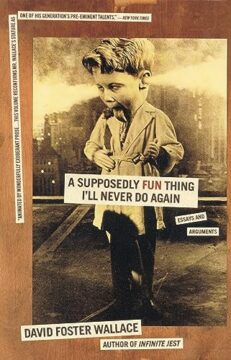 I might’ve stayed away from David Foster Wallace forever were it not for Coco Gauff, whose U.S. Open win last year stirred within me some need to try to fall back in love with tennis—not as a player, but as a literary spectator. Steering clear of the courts, I stuck close to the page, reading what I could of the sport (John McPhee’s Levels of the Game, and a slew of biographies on Arthur Ashe and Andre Agassi) before facing off with the man I’d been avoiding, whom John Jeremiah Sullivan hailed as “the greatest tennis writer of his generation.”
I might’ve stayed away from David Foster Wallace forever were it not for Coco Gauff, whose U.S. Open win last year stirred within me some need to try to fall back in love with tennis—not as a player, but as a literary spectator. Steering clear of the courts, I stuck close to the page, reading what I could of the sport (John McPhee’s Levels of the Game, and a slew of biographies on Arthur Ashe and Andre Agassi) before facing off with the man I’d been avoiding, whom John Jeremiah Sullivan hailed as “the greatest tennis writer of his generation.”
More here.
Did Exxon Make It Rain Today?
Ted Nordhaus in The New Atlantis:

Discussions of weather-related natural disasters in recent years have largely focused on one particular human factor: the consequences of an anthropogenically warming planet. But the heavy concentration of catastrophic disasters prior to the period when climate change began to significantly warm the planet should remind us that the earth’s climate has always been highly variable, extreme, and dangerous. What determines whether hurricanes, floods, heat waves, and wildfires amount to natural disasters or minor nuisances, though, is mostly not the relative intensity or frequency of the natural hazard but rather how many people are in harm’s way and how well protected they are against the climate’s extremes.
Infrastructure, institutions, and technology mediate the relationship between extreme climate and weather phenomena, and the costs that human societies bear as a result of them. Air conditioning mitigates suffering during heat waves. Dams, reservoirs, and flood control systems keep water from inundating population centers during intense rainstorms. Building codes and hardened infrastructure help the built environment withstand hurricanes, tornadoes, and other extreme weather events. Multi-day forecasts, early warning systems, and emergency response capabilities allow people to anticipate climatic extremes, prepare for them, and survive them.
The implications of this point will be counterintuitive for many.
More here.
A dose of working-class realism can save journalism from groupthink
William Deresiewicz in Persuasion:
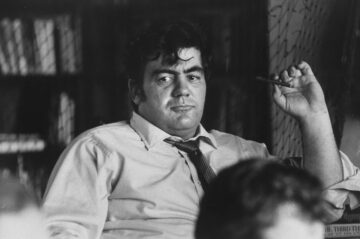 The main thing that I learned in journalism school was that I didn’t belong in journalism school. The other thing I learned was that journalists were deeply anti-intellectual. They were suspicious of ideas; they regarded theories as pretentious; they recoiled at big words (or had never heard of them). For a long time, I had contempt for the profession on that score. In recent years, though, this has yielded to a measure of respect. For notice that I didn’t say that journalists are anti-intellectual. I said they were. Now they’re something else: pseudo-intellectual. And that is much worse.
The main thing that I learned in journalism school was that I didn’t belong in journalism school. The other thing I learned was that journalists were deeply anti-intellectual. They were suspicious of ideas; they regarded theories as pretentious; they recoiled at big words (or had never heard of them). For a long time, I had contempt for the profession on that score. In recent years, though, this has yielded to a measure of respect. For notice that I didn’t say that journalists are anti-intellectual. I said they were. Now they’re something else: pseudo-intellectual. And that is much worse.
The shift reflects the transformation of journalists’ social position. This phenomenon is familiar. Journalism used to be a working-class profession. I think of Jimmy Breslin and Pete Hamill, icons of the New York tabloids, the working people’s papers, in the second half of the twentieth century.
More here.
17th-Century Dildo Shopping with the Ladies: On the Contested Terrain of Early Modern Desire
Annabelle Hirsch at Literary Hub:
 Set out in search of the history of women’s relationship with sex and you will—with a bit of luck—find a very amusing engraving from the seventeenth century lurking in the shallows of the internet. It shows three young women standing at a sales counter.
Set out in search of the history of women’s relationship with sex and you will—with a bit of luck—find a very amusing engraving from the seventeenth century lurking in the shallows of the internet. It shows three young women standing at a sales counter.
You could be forgiven for thinking they’re at a regular weekly market, except that in the places where cheese, salami, fruit, and vegetables would normally go, there hang instead a selection of penises. Big and small, thick and thin, any shape you could ever imagine or wish for. Behind this display stands a woman who appears to be explaining each one in detail.
The two women at the front are pointing at a couple of examples with interest, no doubt asking, “Oh, and what can that one do?” while the third woman hovers in the background, tearing her hair in excitement and—one can only hope—anticipation.
More here.
The 10 Wildest Moments in Oscars History
Sophie Lloyd in Newsweek:
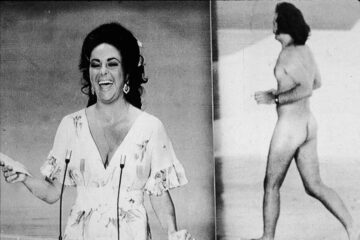 It’s that time of year again. On March 10, stars will gather in Hollywood’s Dolby Theatre to celebrate the best and brightest in filmmaking at the 96th Academy Awards. The awards ceremony is usually regarded as a classy affair, but with so many big personalities—and lots of alcohol—in one room, occasionally, there are a few unexpected fireworks. Whether it’s nudity, alleged incest on the red carpet or a deafening slap, here are 10 wild moments in Oscars history.
It’s that time of year again. On March 10, stars will gather in Hollywood’s Dolby Theatre to celebrate the best and brightest in filmmaking at the 96th Academy Awards. The awards ceremony is usually regarded as a classy affair, but with so many big personalities—and lots of alcohol—in one room, occasionally, there are a few unexpected fireworks. Whether it’s nudity, alleged incest on the red carpet or a deafening slap, here are 10 wild moments in Oscars history.
The Infamous Academy Awards’ Streaker
While introducing Elizabeth Taylor, who presented the award for Best Picture in 1974, host David Niven was interrupted by a man running naked across the stage to rapturous applause. Niven wasn’t bothered by the streaker, telling the crowd at the 46th Academy Awards, “Probably the only laugh that man will ever get in his life is by stripping off and showing his shortcomings.” The streaker was 34-year-old Robert Opel, an LGBTQ+ activist and photographer. Opel announced his bid for president in 1976 with the slogan “Nothing to Hide,” but he was murdered a few years later.
More here.
Stepping Into the Unknome
Danielle Gerhardt in The Scientist:
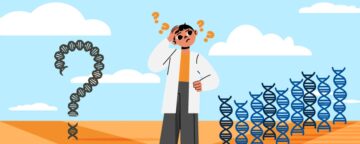 In the last two years, scientists achieved two genomic milestones: the complete sequences of the human non-Y genome and, just this past August, that of the Y chromosome.1,2 With the final pages of the human genetic playbook complete, plenty of mysteries remain, including the function of many of the 20,000-25,000 protein-coding genes. To encourage research on these many mystery genes, a team of scientists have created a new publicly available database that ranks genes based on how little is known about them.3 Using this new directory, they selected more than 200 neglected genes that are evolutionarily conserved between fruit flies and humans. The systematic silencing of these genes in fruit flies revealed that many are essential for survival and other important biological functions, demonstrating that there is still much to be explored in the vast unknowns in the genome.
In the last two years, scientists achieved two genomic milestones: the complete sequences of the human non-Y genome and, just this past August, that of the Y chromosome.1,2 With the final pages of the human genetic playbook complete, plenty of mysteries remain, including the function of many of the 20,000-25,000 protein-coding genes. To encourage research on these many mystery genes, a team of scientists have created a new publicly available database that ranks genes based on how little is known about them.3 Using this new directory, they selected more than 200 neglected genes that are evolutionarily conserved between fruit flies and humans. The systematic silencing of these genes in fruit flies revealed that many are essential for survival and other important biological functions, demonstrating that there is still much to be explored in the vast unknowns in the genome.
Sean Munro, a biologist at the MRC Laboratory of Molecular Biology and coauthor of the paper, noted that the functional unknome—a portmanteau of unknown genome and a catchall coined by the authors to describe the collection of known genes with unknown function—has shrunk since the early 2000s, but scientists have plenty of ground to cover. “There’s still a couple thousand genes in the human genome, at least, for which essentially nothing is known, and then there are some where a little is known, but not very much,” said Munro.
More here.
Sunday Poem
The Endless Journey
Man instinctively regards himself
as a wanderer and wayfarer,
and it is second nature for him
to go on pilgrimage in search
of a privileged and holy place,
a center and source of
indefectible life.
This hope is built into his psychology,
and whether he acts it out or simply
dreams it, his heart seeks to return
to a mythical source, a place
of “origin,” the “home”
where the ancestors came from,
the mountain where the ancient
fathers were in direct communication
with heaven, the place of the
creation of the world, paradise
itself, with its sacred
tree of life.
Thomas Merton
from Poetic Outlaws
Akira Toriyama (1955 – 2024) Manga Artist
Steve Lawrence (1935 – 2024) Singer, Comedian, and Actor
David Bordwell (1947 – 2024) Film Theorist
https://www.youtube.com/watch?v=EtiuIrQrKn8&ab_channel=ExtrassChannels
Saturday, March 9, 2024
Reading Genesis by Marilynne Robinson
Julian Coman at The Guardian:
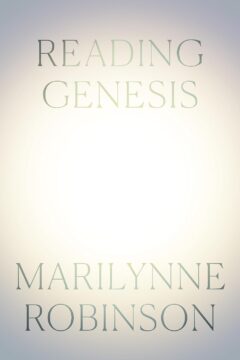 Robinson illustrates how the ancient Hebrew authors borrowed liberally from the Babylonian mythologies created by their near-east neighbours. But with a crucial distinction. Great narratives such as the Epic of Gilgamesh and the Enuma Elish feature fickle, rivalrous deities who turn their ruthless gaze on mortals only when it serves their interest. In stark contrast, Genesis portrays a troubled love story between humanity and a divine creator who is described as, extraordinarily, “having created man in his own image”.
Robinson illustrates how the ancient Hebrew authors borrowed liberally from the Babylonian mythologies created by their near-east neighbours. But with a crucial distinction. Great narratives such as the Epic of Gilgamesh and the Enuma Elish feature fickle, rivalrous deities who turn their ruthless gaze on mortals only when it serves their interest. In stark contrast, Genesis portrays a troubled love story between humanity and a divine creator who is described as, extraordinarily, “having created man in his own image”.
The vision of a single omniscient and benevolent God is a staggering new departure in ancient literature, with implications all the way down to design details. In the Garden of Eden, Robinson points out, “the beauty of the trees is noted before the fact that they yield food”. Here is a world packed with signs of a divine desire that the first humans feel at home. Compared with the surrounding myths on offer, this vision “is from the beginning an immeasurable elevation of status”.
more here.
The Life and Line of Keith Haring
Alexandra Jacobs at the New York Times:
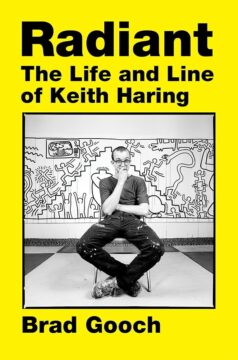 Modern art can baffle and intimidate. Keith Haring strove to democratize it.
Modern art can baffle and intimidate. Keith Haring strove to democratize it.
Haring, who died at 31 of complications from AIDS after a brief but dizzyingly productive international career, drew and painted for the masses and the kids, sometimes getting handcuffed and fined for his trouble. In the garbage-and-graffiti-weary New York of the 1980s, his creations — first chalked on blank advertising boards in subways, then bolder and more enduring, like the safety-orange “Crack Is Wack” mural that still stands in an East Harlem handball court — were like a fresh new roll of wallpaper. As his canvases and sculptures began selling to private collectors for big bucks, he carried on doing public work, notably for a children’s hospital in Paris. He loved children, and his more G-rated drawings — with faint inflection of Robert Hargreaves’s Mr. Men and Little Miss series — have been grafted onto many books for them, one by his sister Kay Haring.
more here.
